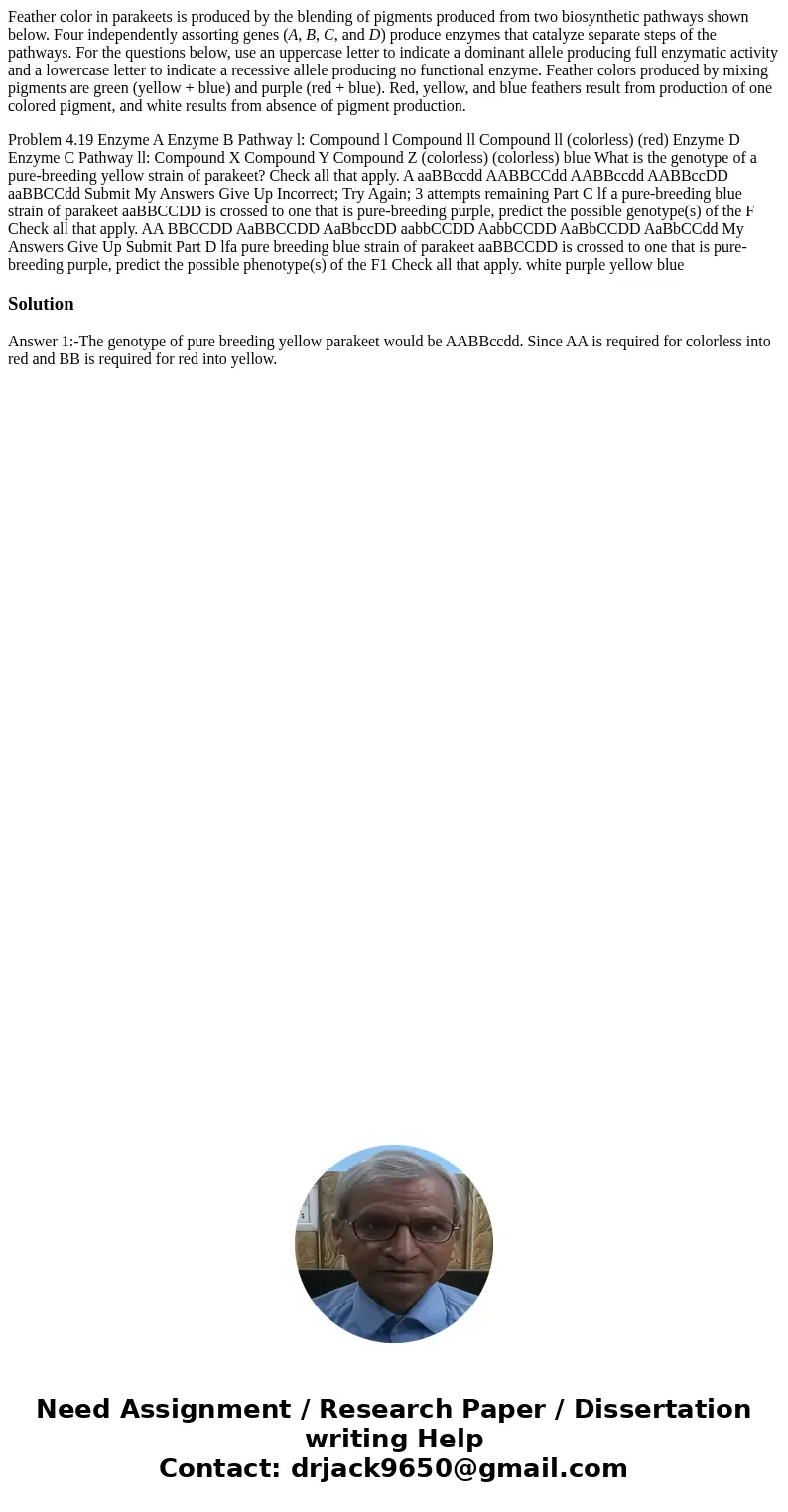Feather color in parakeets is produced by the blending of pi
Feather color in parakeets is produced by the blending of pigments produced from two biosynthetic pathways shown below. Four independently assorting genes (A, B, C, and D) produce enzymes that catalyze separate steps of the pathways. For the questions below, use an uppercase letter to indicate a dominant allele producing full enzymatic activity and a lowercase letter to indicate a recessive allele producing no functional enzyme. Feather colors produced by mixing pigments are green (yellow + blue) and purple (red + blue). Red, yellow, and blue feathers result from production of one colored pigment, and white results from absence of pigment production.
Problem 4.19 Enzyme A Enzyme B Pathway l: Compound l Compound ll Compound ll (colorless) (red) Enzyme D Enzyme C Pathway ll: Compound X Compound Y Compound Z (colorless) (colorless) blue What is the genotype of a pure-breeding yellow strain of parakeet? Check all that apply. A aaBBccdd AABBCCdd AABBccdd AABBccDD aaBBCCdd Submit My Answers Give Up Incorrect; Try Again; 3 attempts remaining Part C lf a pure-breeding blue strain of parakeet aaBBCCDD is crossed to one that is pure-breeding purple, predict the possible genotype(s) of the F Check all that apply. AA BBCCDD AaBBCCDD AaBbccDD aabbCCDD AabbCCDD AaBbCCDD AaBbCCdd My Answers Give Up Submit Part D lfa pure breeding blue strain of parakeet aaBBCCDD is crossed to one that is pure-breeding purple, predict the possible phenotype(s) of the F1 Check all that apply. white purple yellow blueSolution
Answer 1:-The genotype of pure breeding yellow parakeet would be AABBccdd. Since AA is required for colorless into red and BB is required for red into yellow.

 Homework Sourse
Homework Sourse